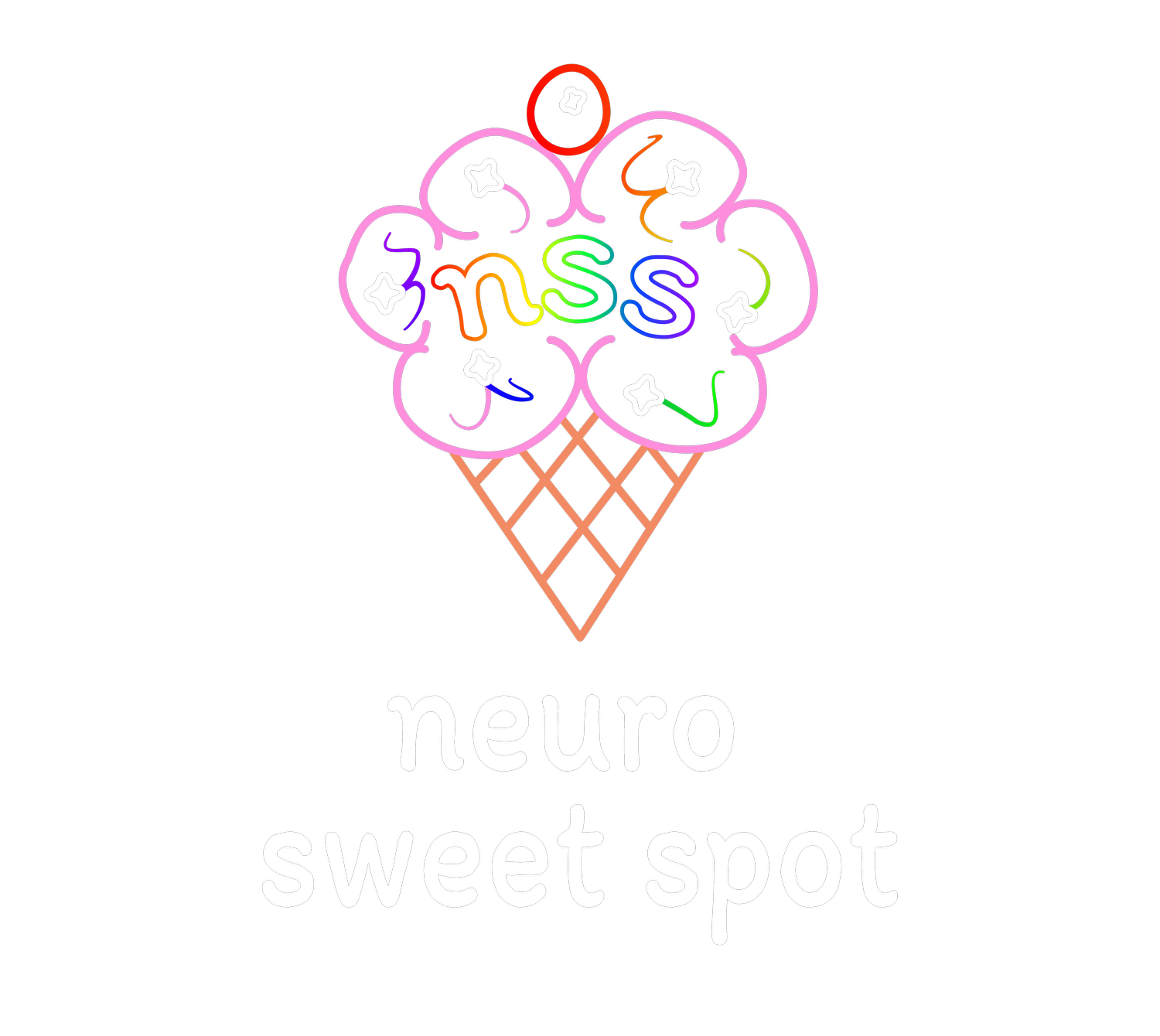
Education and Tangible Resources:
Dive Into Insights and Tips
Discover Your Brain. Discover You.
Clarity brings confidence as you find your Neuro Sweet Spot.
The Brain Science Behind Empathy and Validation:
How Naming Emotions Physically Helps Us
(AKA Name it to Tame it)
Empathy and validation are more than just psychological concepts—they create real, measurable chemical changes in the brain.
When you accurately name and validate someone’s emotions, their brain releases chemicals that reduce stress, foster connection, and promote emotional healing. Here’s how it works:
1. The Neuroscience of Emotional Validation
Labeling Emotions Reduces Stress
• The act of putting feelings into words, called affect labeling, reduces activity in the amygdala, the brain’s fear and threat center.
• This calms the body’s stress response, lowering cortisol (the stress hormone) and increasing a sense of safety.
• Studies using fMRI scans show that when individuals verbalize their emotions, their brain shifts activity from the amygdala to the prefrontal cortex, which helps with rational thinking and emotional regulation.
Empathy Triggers Oxytocin, the “Bonding Hormone”
• When someone feels truly heard and understood, their brain releases oxytocin, the hormone responsible for social bonding and trust.
• Oxytocin enhances feelings of connection, reducing loneliness and strengthening relationships.
• This is why moments of deep validation feel physically comforting—oxytocin reduces stress and increases feelings of warmth and security.
Dopamine and Serotonin: The Brain’s Natural Rewards for Validation
• When someone receives validation, their brain often releases dopamine, the reward chemical that makes them feel valued and understood.
• Serotonin, a mood-regulating neurotransmitter, is also involved. Being validated boosts serotonin levels, reducing anxiety and improving emotional stability.
• This chemical release explains why validation can sometimes bring an immediate sense of relief or even lead to tears—it’s a physiological release of pent-up emotional tension.
2. Why Humans Are Wired for Emotional Recognition
The Mirror Neuron System: How We Feel Others’ Emotions
• The brain contains mirror neurons, which fire when we observe others’ emotions or experiences.
• When we see someone in distress, our brain mirrors their emotional state, allowing us to feel a version of what they feel.
• This process helps us instinctively recognize emotions and respond appropriately, making empathy a hardwired part of human interaction.
Social Safety and Evolutionary Biology
• Historically, humans survived by relying on group bonds. Emotional validation helped reinforce social cohesion.
• The nervous system has evolved to be highly attuned to social safety, meaning we feel physical relief when we know we are understood and accepted by others.
• This is why being dismissed or invalidated triggers a threat response—our brain interprets social rejection as a form of danger.
3. How Naming an Emotion Can Change Its Impact
Turning Chaos Into Clarity
• Before an emotion is named, it exists as a raw, overwhelming experience in the body.
• The moment we put words to it, the prefrontal cortex (the brain’s reasoning center) begins to organize and process the emotion.
• This helps reduce emotional intensity, making it easier to manage distress.
Validation as a Form of Co-Regulation
• When one person names and validates another’s emotions, it acts as emotional co-regulation, helping both people feel more balanced.
• Parents naturally do this for children when they say, “I see you’re frustrated.” This simple act helps children develop emotional regulation skills.
• Adults also benefit from this process—having someone recognize and validate emotions helps stabilize the nervous system and reduce distress.
4. The Consequences of Invalidation: What Happens When We’re Dismissed?
Increased Stress and Emotional Suppression
• When emotions are dismissed or ignored, the amygdala stays highly active, keeping the brain in a state of perceived threat.
• This prolongs the stress response, leading to higher cortisol levels, which can cause anxiety, fatigue, and even physical illness over time.
Shame and Loneliness
• Invalidation creates a sense of social disconnection, activating pain-related brain regions similar to physical pain.
• This can lead to shame, self-doubt, and withdrawal from relationships.
• Over time, repeated invalidation can make individuals less likely to express emotions, increasing the risk of mental health struggles.
5. How to Validate Effectively: Simple Strategies to Create Real Change
1. Name the Emotion
• Example: “It sounds like you’re feeling really overwhelmed right now.”
• This simple act shifts brain activity, helping the person feel seen and heard.
2. Acknowledge Their Experience Without Trying to Fix It
• Instead of “It’s not a big deal, you’ll be fine,” try “That sounds really frustrating. I can see why that would upset you.”
• This allows their nervous system to relax and process emotions naturally.
3. Use Nonverbal Cues to Reinforce Safety
• Gentle eye contact, nodding, and an open posture help signal safety to the other person’s brain.
• A warm tone of voice can release oxytocin and further enhance connection.
4. Let Them Have Their Feelings Without Rushing Them
• Example: “It’s okay to feel that way. You don’t have to push it away.”
• This encourages emotional processing rather than suppression.
Final Thoughts: Why This Matters for Mental and Physical Well-Being
• Emotional validation isn’t just about being kind—it’s a scientifically-backed way to reduce stress, improve emotional health, and build deeper relationships.
• When we name and acknowledge emotions, we activate the brain’s natural calming and bonding systems, making others feel safer and more connected.
• Small acts of validation can have long-lasting physiological benefits, making them a simple but powerful tool for mental well-being.
By understanding and applying these principles, we can create interactions that literally change people’s brain chemistry for the better—helping ourselves and those around us feel seen, supported, and emotionally regulated.

